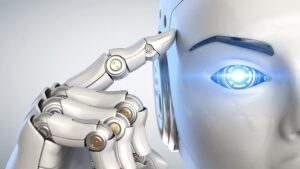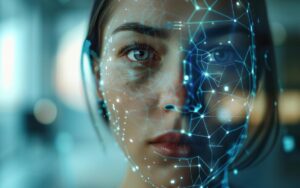There are plenty of career opportunities for people wanting to get into artificial intelligence and machine learning. However, before you start your career in these exciting fields, you must complete the interview process.
Luckily, we have you covered!
This article outlines the most popular machine learning interview questions and answers for 2024. We’ve divided the interview questions into two categories: introductory questions for entry-level positions and experienced questions for candidates applying for a more established and challenging position. We’ll also share a way to get online AL ML training to gain practical skills.
But before we get into the actual machine learning interview questions and answers, let’s see what machine learning is and why it’s proliferating.
What’s Machine Learning?
Machine learning is a subsection of artificial intelligence involving the development of algorithms and statistical models that let computers use experience to improve their task performance. Or, to represent ML as an equation, computers learn from task (T) and improve their performance (P) from experience (E).
Why is the Machine Learning Trend Growing So Fast?
Machine learning solves problems in real-world situations. Rather than relying on complex coding rules to deal with an issue, machine learning algorithms learn from past data and help machines and applications develop the correct answers without human intervention.
And now, on to the top 40 machine learning interview questions and answers for 2024.
Also Read: Machine Learning in Healthcare: Applications, Use Cases, and Careers
Top Machine Learning Interview Questions for Beginners
Name the three different types of machine learning.
1: The three types of machine learning are supervised, unsupervised and reinforcement learning. Some people add a fourth type, semi-supervised learning.
What’s overfitting, and how do you avoid it?
2: Overfitting occurs when a model learns its training set too well, gathering random fluctuations in the training data as concepts. The fluctuations impact the model’s ability to generalize and apply new data. You can avoid overfitting by simplifying the model, regularizing it, or using a cross-validation method such as k-fold.
How do you deal with corrupt or missing data in a data set?
3: Drop the offending columns or rows or replace them outright with other values.
What are false positives and false negatives?
4: False positives are cases wrongly classified as True but are False, while false negatives are cases wrongly classified as False but are True.
Describe the three stages of model building in a machine learning context.
5: The three stages of model building are:
- Model building. Pick a suitable algorithm and train it for the requirements.
- Model testing. Use test data to check the model’s accuracy.
- Model application. Make the needed changes after testing and use the final model for actual projects.
What’s deep learning?
6: Deep learning is a machine learning subset involving systems that employ artificial neural networks to think and learn like humans. We use the term ‘deep’ because you can have several layers of neural networks.
What are the differences between the disciplines of machine learning and deep learning?
7: There are several significant differences:
- Machine learning lets machines make decisions using past data, while deep learning allows machines to do this with neural networks.
- Machine learning needs only a small amount of data for training, while deep learning requires extensive data.
- In machine learning, problems are split into two parts, solved individually and combined.
- In machine learning, most features must be manually coded and identified in advance, while in deep learning, machines learn from the provided data.
How does semi-supervised machine learning differ from supervised and unsupervised learning?
8: Supervised learning uses completely labeled data; unsupervised learning uses no training data. In semi-supervised learning, training data features a tiny bit of labeled data and a large amount of unlabeled data.
What are the two unsupervised learning techniques?
9: The two techniques are clustering and association.
Why is the Naïve Bayes Classifier called “naïve?”
10: The classifier is called “naïve” because it makes assumptions that may or may not be correct.
How do you know which machine learning algorithm will solve your classification issue?
11: Although there’s no set formula, consider these guidelines:
- If accuracy matters, test various algorithms and cross-validate them.
- Use models with low variance and high bias if you have a small training data set.
- Use models with high variance and slight bias if you have an extensive training data set.
Also Read: What is Machine Learning? A Comprehensive Guide for Beginners
What’s supervised learning?
12: Supervised learning is a machine learning algorithm that infers functions from labeled training data.
What’s unsupervised learning?
13: Unsupervised learning is a machine learning algorithm for finding patterns in a given data set. It doesn’t have a dependent variable or label to predict.
What is PCA, and when do you use it?
14: PCA is short for principal component analysis and is most used in dimension reduction.
How do general programming and machine learning differ?
15: General programming has both the data and the logic needed to get answers, while machine learning has the data and the answers, letting the machine figure out the logic to use to solve future problems.
What’s a hypothesis in the context of machine learning?
16: A hypothesis is the mapping approximation from the feature space to the target variable.
Why can’t we use linear regression for classification tasks?
17: We can’t use linear regression for a classification task mostly because linear regression output is continuous and unbounded, and classification needs discrete and bounded output values.
Why do you perform normalization?
18: You conduct normalization to achieve stable and fast model training of the model, bringing all the features to a specific range of values or scales.
Explain the difference between correlation and covariance.
19: Covariance gives us the measure of the extent to which two variables differ, while correlation gives us the measurement of the extent to which the two variables relate.
What’s one-shot learning?
20: In one-shot learning, the model is trained to recognize patterns in data sets from a single example rather than training on large data sets.
Top Machine Learning Interview Questions for Experienced Applicants
Let’s crank up the difficulty with these twenty experienced machine learning interview questions and answers.
When do you use classification instead of regression?
1: Use classification when your target is categorical; use regression when working with a continuous target variable.
What’s a Random Forest?
2: A Random Forest is a supervised machine learning algorithm for classification problems. It works by building multiple decision trees during the training phase, hence the “forest.” The random forest reaches a final decision by selecting the decision of most trees.
How do you decide on which machine learning algorithm you should use?
3: There is no set universal answer. But you can ask yourself the following questions:
- How much data do you have, and is it categorical or continuous?
- Is it a classification, association, clustering, or regression problem?
- What’s your goal?
- Are you working with predefined variables (labeled), unlabeled, or a mix?
What’s a Decision Tree Classification?
4: Decision Trees build classification or regression models as a tree structure, using data sets split up into ever-smaller subsets as the decision tree is developed. This is done literally in a tree-like way, complete with branches and nodes. Decision trees can take both categorical and numerical data.
Explain Decision Tree pruning.
5: Pruning is a technique used in machine learning that shrinks Decision Tree sizes. Pruning reduces the final classifier’s complexity, thus improving the predictive accuracy by reducing overfitting.
What’s logistic regression?
6: Logistic regression is a classification algorithm that predicts binary outcomes for a given set of independent variables. Logistic regression output is either a 0 or 1, with a typical threshold value of 0.5. Any value above 0.5 is considered 1, and any point below 0.5 is regarded as 0.
Also Read: Machine Learning Interview Questions & Answers
What’s a Kernel SVM?
7: Kernel SVM is short for kernel support vector machine. Kernel methods are an algorithm class used for pattern analysis, most commonly kernel SVM.
Explain ensemble learning.
8: Ensemble learning combines results from multiple machine learning models, increasing accuracy for improved decision-making. For example, a Random Forest with 200 trees will provide far better results than one with two trees.
Explain precision and recall.
9: Precision and recall are means of monitoring the power of machine learning implementation and are often used simultaneously.
- Precision answers the question, “How many of the items the classifier predicted to be relevant are relevant?”
- Recall answers the question, “How many of the genuinely relevant items were found by the classifier?
What’s a neural network?
10: A neural network is a simplified model of the human brain. Like the human brain, the neural network has neurons that activate when facing something similar. The different neurons are attached via connections that help data flow from one neuron to another.
What’s clustering?
11: Clustering is the process of grouping sets of objects into numerous groups. Objects should be similar within the same cluster and different from those in other clusters. A few typical types of clustering include:
- Hierarchical clustering
- K-means clustering
- Density-based clustering
- Fuzzy clustering
How do you check a data set’s normality?
12: You can use plots for a visual check. Here’s a sample of checks:
- Anderson-Darling Test
- D’Agostino Skewness Test
- Kolmogorov-Smirnov Test
- Martinez-Iglewicz Test
- Shapiro-Wilk Test
Can logistic regression be used for more than two classes?
13: No. Logistic regression is, by default, a binary classifier.
What’s a P-value?
14: P-values are used to make decisions about hypothesis tests. A P-value is the minimum significant level at which you can reject a null hypothesis. The lower the P-value, the more likely you will reject the null hypothesis.
Explain parametric and non-parametric models.
15: Parametric models have limited parameters. To predict new data, you only need to know the model’s parameter of the model. Meanwhile, non-parametric models have no limits to the number of parameters they can take, allowing more flexibility and the ability to predict new data.
What’s the difference between Sigmoid and Softmax functions?
16: Sigmoid functions are used for binary classification, and the probabilities sum must be 1. Meanwhile, the Softmax function is used for multi-classification, and the probabilities sum will be 1.
What’s the SMOTE method?
17: The Synthetic Minority Oversampling Technique handles data imbalance problems in the data set. With SMOTE, we use linear interpolation to synthesize new data points using existing ones from minority classes. The advantage of using SMOTE is that the model isn’t trained on the same data. Still, the disadvantage is that the method adds undesired noise to the data set, which can negatively affect the model’s performance.
Is the accuracy score always a good metric to measure classification model performance?
18: No. Sometimes, when we train our models on an imbalanced data set, the accuracy score could be a better metric to measure model performance. Precision and recall measure the classification model’s performance in these cases.
Why would you split a given data set into training and validation data?
19: The primary reason for splitting the data set is to retain some leftover data on which the model hasn’t been trained so we can evaluate the machine’s learning model’s performance after training.
Explain the difference between K-Means and the KNN algorithm.
20: The K-Means algorithm is one of the most well-known and popular unsupervised machine learning algorithms used for clustering purposes, while the KNN is a model generally used for classification tasks and is a supervised machine learning algorithm.
Do You Want to Learn More About Artificial Intelligence?
Preparation is a great way to improve your chances of answering machine learning interview questions well. Still, you can take additional action to increase your likelihood of success: take this online AI ML program. This course trains you in artificial intelligence and machine learning fundamentals, enhancing your knowledge of these innovative, cutting-edge technologies.
Glassdoor.com indicates that artificial intelligence engineers make an annual average salary of $127,320. So, join this online course and improve your chances of securing that machine learning career!
You might also like to read:
How to Become an AI Architect: A Beginner’s Guide
How to Become a Robotics Engineer? A Comprehensive Guide
Machine Learning Engineer Job Description – A Beginner’s Guide






